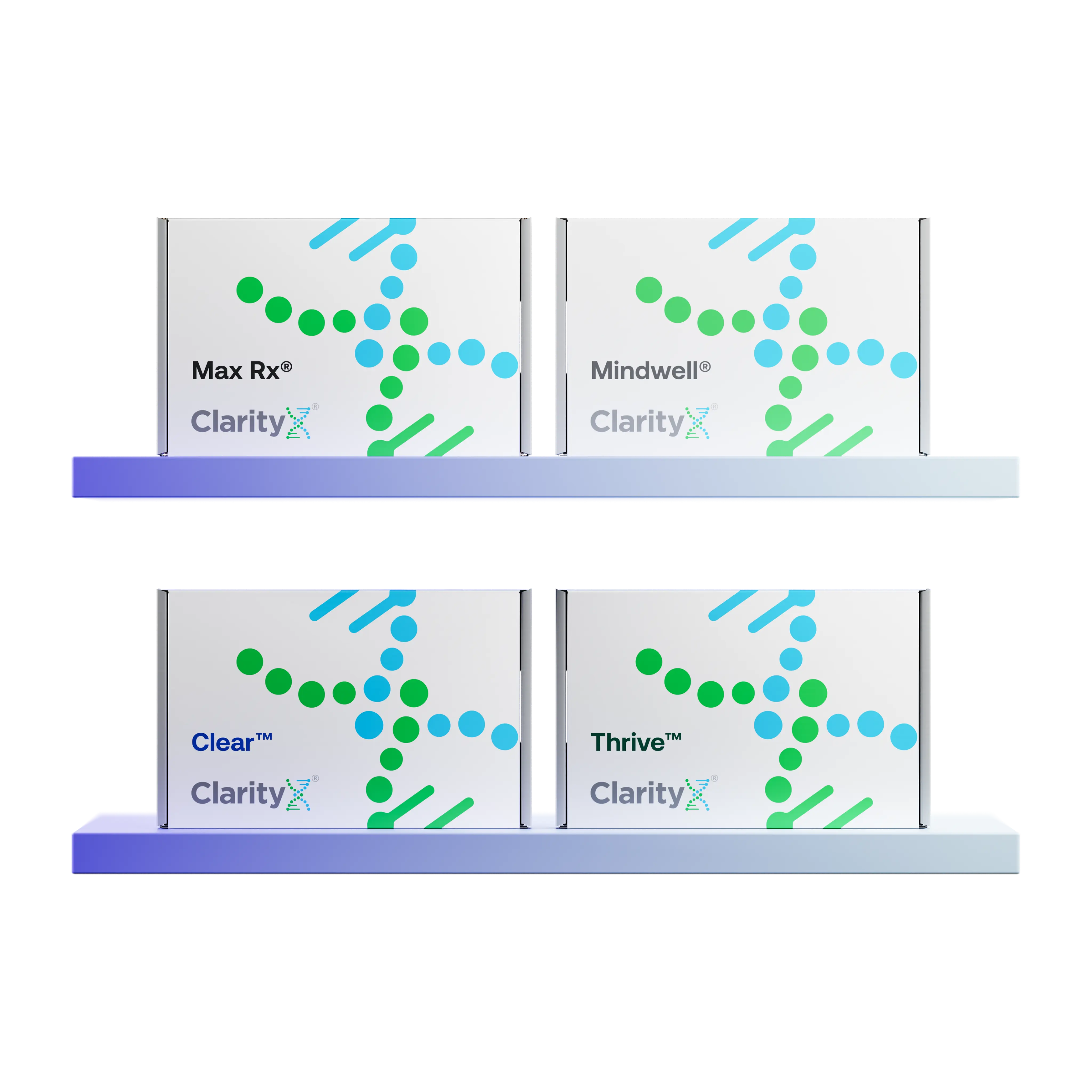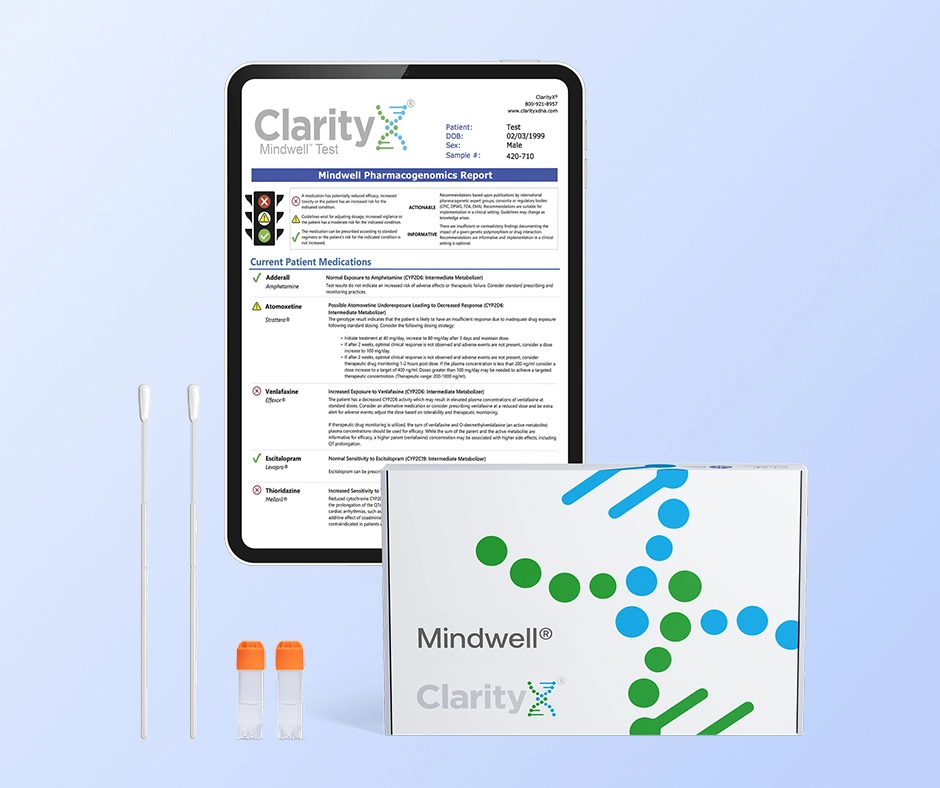ADHD, or attention deficit hyperactivity disorder, is a common neurodevelopmental disorder that affects both children and adults. Individuals with ADHD may struggle with attention, impulse control, and hyperactivity, which can significantly impact their daily lives. While there is no definitive cure for ADHD, there are several treatment options available, including medication. Two commonly prescribed medications for ADHD are Strattera and Intuniv. In this blog, we will explore the key differences between Strattera and Intuniv, their effectiveness, and their potential side effects to help you make an informed decision about which medication may be the better option for you or your loved one.
Key Takeaways
- Strattera (atomoxetine) works by increasing levels of norepinephrine and exerts an effect similar to some antidepressants. Caution must be exercised when combined with medications for managing depression and different forms of anxiety.
- Intuniv (guanfacine) is an alpha-adrenergic agonist, meaning it can be considered a stimulant. Its mechanism for ADHD management is ultimately ill-defined, although it affects moderation of norepinephrine and dopamine. It works differently than other stimulants used for ADHD, like amphetamines or methylphenidate, however.
- Both medications are non-controlled.
- These medications both need to be used consistently over time to remain effective. They cannot be taken only on school days, etc.
- A primary side effect of Intuniv is drowsiness and fatigue.
- Strattera has been associated with higher rates of stomach upset and decreased appetite. Monitoring growth parameters over time is important when administered to pediatric patients.
- Both medications are effective for the management of ADHD symptoms. These medications have not been studied head-to-head directly, but indirect studies have suggested that Intuniv may be more effective than Strattera across a broad population.
- Strattera metabolism is affected by CYP2D6, and Intuniv metabolism is affected by CYP3A4. Genetic testing for ADHD may help predict individual responses to these medications.
Understanding ADHD
Living with ADHD can be challenging, both for individuals who are diagnosed with the disorder and for their families. ADHD is characterized by symptoms such as inattention, hyperactivity, and impulsivity. Children with ADHD may struggle to follow instructions, finish tasks, or stay organized, while adults may have difficulty with time management, organization, and goal setting. It's important to note that ADHD symptoms can vary in severity and presentation, and the impact of the disorder can extend beyond academic and occupational functioning to social interactions and overall quality of life.
What is ADHD?
ADHD, short for attention deficit hyperactivity disorder, is one of the most common neurodevelopmental disorders, affecting approximately 5-10% of children and 2-5% of adults worldwide. It is characterized by persistent patterns of inattention, hyperactivity, and impulsivity that interfere with daily functioning and development. ADHD is often diagnosed in childhood, but symptoms can persist into adolescence and adulthood. The exact cause of ADHD is unknown, but research suggests that a combination of genetic, neurological, and environmental factors contribute to its development. Effective treatment for ADHD typically involves a multimodal approach, including medication, behavioral therapy, and support from healthcare professionals, educators, and family members.
Common Symptoms of ADHD
The symptoms of ADHD can vary among individuals, but the three main types of ADHD are predominantly inattentive, predominantly hyperactive-impulsive, and combined type. Inattentive symptoms include difficulty sustaining attention, being easily distracted, forgetfulness, and trouble organizing tasks. Hyperactive-impulsive symptoms may manifest as excessive fidgeting, restlessness, impulsivity, interrupting others, and difficulty waiting turns. Combined type ADHD involves a combination of inattentive and hyperactive-impulsive symptoms. Other common symptoms of ADHD may include mood swings, irritability, low frustration tolerance, and difficulties with executive functions, such as planning, prioritizing, and self-regulation. It's important to note that not all individuals with ADHD will exhibit the same symptoms, and the severity of symptoms can vary.
Strattera for ADHD
Strattera is a medication commonly prescribed for the treatment of ADHD. Unlike stimulant medications, such as methylphenidate or amphetamines, Strattera is a non-stimulant medication known as atomoxetine. It is approved for use in children, adolescents, and adults with ADHD. Strattera works by increasing the levels of norepinephrine, a neurotransmitter involved in attention and behavior control, in the brain. This mechanism of action sets Strattera apart from other ADHD medications, as it does not directly affect dopamine levels. Consequently, Strattera does not have the potential for abuse and is not classified as a controlled substance.
How Strattera Works
Strattera, or atomoxetine, is classified as a selective norepinephrine reuptake inhibitor (SNRI). It inhibits the reuptake of norepinephrine, a neurotransmitter, which allows more norepinephrine to be available in the brain. Norepinephrine plays a role in attention, behavior control, and regulation of impulses. By increasing norepinephrine availability, Strattera helps improve attention and reduce hyperactivity and impulsivity in individuals with ADHD. The effects of Strattera are not immediate and may take several weeks to reach their full potential. It is important to note that while Strattera is effective for some individuals, it may not be as effective for others. Every individual responds differently to medication, and finding the right treatment plan often involves a process of trial and error.
Dosage and Administration of Strattera
The dosage of Strattera is determined by weight, and it is typically started low and gradually increased to find the optimal dose for each patient. Strattera is available in capsule form, and the capsules should be taken whole, not crushed or chewed, with water. It is important to carefully follow your healthcare provider's medication guide and prescription label instructions. Regular visits to the healthcare provider are essential to monitor treatment progress, adjust the dosage if needed, and discuss any concerns or side effects. Abrupt discontinuation of Strattera should be avoided, and it is important to discuss any changes in the medication regimen with a healthcare professional.
Side Effects and Precautions of Strattera
While Strattera is generally well-tolerated, it is important to be aware of potential side effects and precautions. Common side effects of Strattera may include:
- Loss of appetite: Some individuals may experience a decrease in appetite while taking Strattera. Monitoring weight and ensuring proper nutrition is important.
- Stomach upset: Symptoms ranging from upset stomach to nausea and vomiting can occur in some patients. Starting at a lower dose and raising the dose slowly over time can help prevent this.
- Dry mouth: This is a common side effect, but it can be managed by drinking plenty of fluids or using sugar-free candies or gum.
- Mood swings: Strattera can sometimes cause changes in mood or emotional regulation.
Less commonly, more serious side effects may occur, and these should be promptly reported to a healthcare professional:
- High blood pressure: Strattera can increase blood pressure, so regular monitoring of blood pressure is necessary.
- Liver disease: In rare cases, Strattera may cause liver problems. Signs of liver disease, such as dark urine, yellowing of the skin or eyes, or abdominal pain, should be reported to a healthcare provider immediately.
- Suicidal thoughts: Some individuals may experience changes in mood, including suicidal thoughts, while taking Strattera. Any unusual thoughts or mood changes should be discussed with a healthcare professional.
It's important to note that this is not an exhaustive list of side effects, and individual experiences may vary. It is crucial to discuss any concerns or side effects with a healthcare provider to determine the most appropriate course of action.
Intuniv for ADHD
Intuniv, also known as guanfacine extended-release, is another medication commonly prescribed for the treatment of ADHD. Unlike Strattera, Intuniv falls into the category of stimulant medications. Intuniv is not a controlled substance, however, which distinguishes it from therapeutic options like amphetamines or methylphenidate.
It is approved for use in children and adolescents with ADHD, and can be used as a standalone treatment or in combination with other stimulant medications. Intuniv works by targeting the prefrontal cortex, a region of the brain involved in attention, behavior, and impulse control, through selective activation of alpha-2A adrenergic receptors. This mechanism of action helps regulate norepinephrine, a neurotransmitter associated with attention and hyperactivity.
How Intuniv Works
Intuniv, or guanfacine extended-release, is in a class of medications known as selective alpha-2A adrenergic receptor agonists. It acts on the prefrontal cortex, a region of the brain involved in attention, impulse control, and behavior regulation, by selectively activating alpha-2A adrenergic receptors. The mechanism is ultimately ill-defined in ADHD management, but this activity can help reduce norepinephrine activity in the prefrontal cortex specifically, which helps improve attention and reduce hyperactivity and impulsivity in individuals with ADHD.
Unlike stimulant medications, such as methylphenidate or amphetamines, Intuniv does not directly affect dopamine levels in the brain. The exact mechanism of action of Intuniv in the treatment of ADHD is not fully understood, but it is believed to have a calming effect on hyperactive and impulsive behaviors.
Dosage and Administration of Intuniv
The dosage of Intuniv is determined based on weight and may vary from individual to individual. It is typically initiated at a low dose and titrated based on the individual's response and tolerability. Intuniv is available in extended-release tablets, which should be swallowed whole, not chewed, crushed, or broken, with water. The medication can be taken with or without food, as directed by the healthcare provider. It's important to follow the specific dosing instructions the healthcare provider provides, as individual needs may vary. Like Strattera, regular visits to the healthcare provider are necessary to monitor treatment progress, adjust the dosage if needed, and address any concerns or side effects. It is essential to store Intuniv at room temperature, away from moisture and heat, and out of reach of children.
Side Effects and Precautions of Intuniv
As with any medication, there are potential side effects and precautions associated with the use of Intuniv. Common side effects of Intuniv may include:
- Somnolence (drowsiness) and fatigue: Among individuals using Intuniv, drowsiness and sedation are the most common reasons for discontinuing therapy. These effects can increase over the first several weeks of dosing. Starting low and slowly increasing the dose can help avoid these effects.
- Low blood pressure: Intuniv can cause a decrease in blood pressure, leading to symptoms such as dizziness, lightheadedness, or fainting.
- Chest pain: Some individuals may experience chest pain while taking Intuniv. This should be reported to a healthcare professional.
- Trouble sleeping: Difficulty falling asleep or staying asleep may occur, particularly when Intuniv is taken in the late afternoon or evening.
Less commonly, more serious side effects may occur, and these should be promptly reported to a healthcare provider:
- Irregular heartbeat: Intuniv can affect heart rate, and any irregularities or changes in heart rate should be discussed with a healthcare professional.
- Dark urine: In rare cases, Intuniv may cause liver problems. Signs of liver disease, such as dark urine, yellowing of the skin or eyes, or abdominal pain, should be reported to a healthcare provider immediately.
- Allergic reaction: Some individuals may experience an allergic reaction to Intuniv, which can manifest as rash, itching, swelling, or difficulty breathing. Any signs of an allergic reaction should be promptly evaluated by a healthcare professional.
It's important to note that side effects can vary from individual to individual, and this is not an exhaustive list. If you have any concerns or experience side effects while taking Intuniv, it is crucial to consult with a healthcare provider for appropriate guidance and management.
Comparing Strattera and Intuniv
Both Strattera and Intuniv are medication options for the treatment of ADHD, but they differ in their mechanisms of action and side effect profiles. While Strattera is a selective norepinephrine reuptake inhibitor, Intuniv is a selective alpha-2A adrenergic receptor agonist. Strattera is a non-stimulant medication, making it a potential alternative for individuals who do not tolerate stimulant medications. On the other hand, Intuniv is a stimulant medication, but it acts differently from other stimulants commonly used for ADHD treatment. Understanding the similarities and differences between these medications can help guide treatment decisions and choices.
Similarities Between Strattera and Intuniv
While Strattera and Intuniv have different mechanisms of action, they share commonalities in the treatment of ADHD:
- Treatment of ADHD: Both Strattera and Intuniv are approved for the treatment of ADHD in children, adolescents, and adults.
- Non-stimulant medication: Strattera, a selective norepinephrine reuptake inhibitor, and Intuniv, a selective alpha-2A adrenergic receptor agonist, are both non-stimulant medications commonly used for ADHD treatment.
- Heart rate effects: Both medications can affect heart rate, and any changes or irregularities in heart rate should be reported to a healthcare professional.
- These similarities make Strattera and Intuniv viable treatment options for individuals who may not tolerate or prefer not to use stimulant medications.
Differences Between Strattera and Intuniv
While Strattera and Intuniv are both effective in the treatment of ADHD, they differ in various aspects, including:
- Bipolar disorder: Strattera can be used as an adjunct treatment for bipolar disorder, while Intuniv is not indicated for this condition.
- High blood pressure: Strattera can increase blood pressure, while Intuniv can lower blood pressure. Monitoring blood pressure is important when using these medications.
- Selective serotonin reuptake inhibitors (SSRIs): Strattera has been associated with a higher risk of serotonin syndrome when combined with SSRIs, whereas this risk is lower with Intuniv.
- Strattera levels can be impacted by individual variability in CYP2D6 enzyme activity. These differences can cause the medication to be more or less likely to be effective or cause side effects.
- Intuniv levels are impacted by variability in CYP3A4 activity. Differences among individuals may be predictive of patient response.
Understanding these differences can help healthcare providers and individuals with ADHD make informed decisions about the most appropriate medication for their needs.
Effectiveness and Efficacy
ADHD treatment effectiveness can vary depending on the individual, and finding the most effective medication often involves a process of trial and error. Both Strattera and Intuniv have been shown to be effective in reducing symptoms of ADHD, such as inattention, hyperactivity, and impulsivity, in children, adolescents, and adults.
Strattera's Effectiveness in Treating ADHD
Multiple studies have demonstrated the efficacy of Strattera in reducing ADHD symptoms and improving overall functioning. In children and adolescents, Strattera has been shown to significantly decrease hyperactivity, impulsivity, and inattention and improve social and academic functioning. Strattera is also effective in treating adult ADHD, with improvements observed in attention, hyperactivity, and executive functioning. However, response to Strattera treatment can vary among individuals, and factors such as age, dose, and metabolization rate should be considered. Some individuals may metabolize Strattera differently, resulting in variations in drug effectiveness. While Strattera may not work for everyone, it can be a valuable treatment option for individuals who do not tolerate or prefer to avoid stimulant medications.
Intuniv's Effectiveness in Treating ADHD
Intuniv has also demonstrated efficacy in reducing ADHD symptoms, particularly hyperactivity and impulsivity, in children, adolescents, and adults. Studies have shown that Intuniv effectively reduces symptoms of ADHD, improves behavior, and enhances cognitive performance. It is often used as an adjunct medication for individuals who require additional control of hyperactive and impulsive symptoms, particularly in combination with stimulant medication. It is important to note that individual response to Intuniv can vary, and doses may need to be adjusted based on treatment goals and side effect management. Monoamine oxidase inhibitors, a class of medications, should not be taken concurrently with Intuniv due to the risk of adverse effects. Overall, Intuniv provides an alternative treatment option for individuals who may not tolerate or prefer non-stimulant medications.
Comparisons
Strattera and Intuniv have not been studied head-to-head directly, but some studies have attempted to infer the differences between the medications. These studies have found that, across a broad population, Intuniv may be somewhat more effective. It’s important to note that individual responses vary, however. Both medications are ultimately deemed effective for ADHD management.
Patient Experiences
Hearing about personal experiences with medications can provide valuable insights. Individuals may have different experiences with Strattera and Intuniv, and it is important to consider these personal accounts as part of the decision-making process.
Personal Accounts of Using Strattera
Many individuals who have used Strattera have reported positive experiences, noting improvements in attention, reduced hyperactivity, and enhanced impulse control. Some individuals have also shared that Strattera has been well-tolerated, with fewer side effects compared to stimulant medications. Common positive effects mentioned include increased focus, improved organization, and better time management.
Some individuals have reported temporary side effects, such as loss of appetite or mood changes, but these effects were typically transient. Weight loss may occur in some individuals, so ensuring adequate nutrition and overall health is important. Personal accounts can provide a broader perspective, but individual experiences may vary.
Personal Accounts of Using Intuniv
Individuals using Intuniv have also shared positive experiences, noting improvements in attention, decreased impulsivity, and enhanced behavior control. Some users have reported that Intuniv has helped with hyperactivity, making it easier to focus and engage in tasks.
Personal accounts also mention that Intuniv has generally been well-tolerated, with minimal side effects. Some individuals have experienced dry mouth, drowsiness, or temporary changes in blood pressure, but these effects were generally manageable and resolved over time. It's important to note that allergic reactions, although rare, have been reported, and any signs of an allergic reaction, such as rash, itching, swelling, or difficulty breathing, should be promptly evaluated by a healthcare professional. Again, personal experiences can provide insights, but individual responses may differ.
Guidance for Parents and Caregivers
Parents and caregivers play a crucial role in supporting individuals with ADHD. Implementing strategies at home and fostering effective communication with teachers and other caregivers can help create a supportive environment for individuals with ADHD.
Advice for Managing ADHD Symptoms at Home
Managing ADHD symptoms at home can be challenging, but there are strategies that can help support individuals with ADHD:
- Establish daily routines and regular schedules: Predictability and structure can assist with attention and organization.
- Encourage physical activities and outdoor play: Exercise can help reduce hyperactivity and improve mood.
- Create a quiet and organized study space: Providing a dedicated space for homework and study can enhance focus and productivity.
- Use visual aids and timers: Visual reminders, such as calendars, to-do lists, and timers, can help with time management and task completion.
- Provide positive reinforcement and rewards: Offering praise and rewards for accomplishments can motivate and encourage desired behaviors.
It's important to consult with healthcare professionals for dietary supplements and medical advice and to ensure proper medication administration, including timely administration of the next dose.
Communicating with Teachers and Other Caregivers
Open communication with teachers and other caregivers is essential for supporting individuals with ADHD:
- Foster an open dialogue: Regularly communicate with teachers and school staff to stay informed about academic progress, behavior, and any concerns.
- Share specific strategies: Discuss effective strategies employed at home that can be implemented in the educational setting, such as providing visual aids or allowing for movement breaks.
- Collaborate on consistent approaches: Work together to establish consistent behavioral expectations, rewards, and consequences between home and school, fostering a supportive and structured environment.
- Educate caregivers about ADHD: Provide information about ADHD and its impact, helping others understand the challenges faced by individuals with ADHD and how to offer appropriate support.
- Attend regular visits: Schedule regular visits with healthcare professionals to monitor treatment progress, make medication adjustments if necessary, and address any concerns regarding mental health or medication effects.
Communication is key. Maintaining open lines of communication can help ensure a comprehensive and collaborative approach to managing ADHD symptoms.
Which is the Better Option for ADHD - Strattera or Intuniv?
Determining the better option between Strattera and Intuniv depends on various factors, including individual characteristics, treatment goals, and medical history.
Is there a definitive answer?
There is no definitive answer to which medication is better for ADHD, as individual responses and treatment needs can vary. Both Strattera and Intuniv have been shown to be effective in reducing symptoms of ADHD, but their mechanisms of action, side effect profiles, and individual tolerability should be considered.
It's important to work closely with healthcare professionals to determine the most appropriate treatment plan, taking into account the individual's medical history, concurrent medication use, and treatment goals. Regular monitoring, open communication, and prompt medical help for any adverse effects or concerns are crucial. Possible interactions with other medications or medical conditions should also be discussed and managed accordingly.
These medications are processed by enzymes in the body that can affect drug levels and patient response. This leads to individual variability in efficacy and the potential for side effects. Pharmacogenomic testing offers an additional piece of the puzzle to help predict potential responses to these medications and can aid in treatment decisions.
Frequently Asked Questions
Is Strattera the same as Adderall?
Strattera and Adderall are not the same medications. While Strattera is a non-stimulant used for treating ADHD symptoms, Adderall is a stimulant medication prescribed for ADHD and narcolepsy. They have different mechanisms of action and potential side effects. Additionally, Adderall is a controlled substance, while Strattera is non-controlled.
Conclusion
In conclusion, both Strattera and Intuniv are effective medications for managing ADHD symptoms. However, the choice between the two ultimately depends on individual needs and preferences. It is important to consult with a healthcare professional to determine which medication is the most suitable option for you or your child.
Consider factors such as the specific symptoms being targeted, potential side effects, and personal medical history. Additionally, gathering insight from others who have used these medications may be helpful to understand their experiences. Remember, what works for one person may not work for another, so finding the best fit for your unique situation is important.
Resources:
https://www.webmd.com/add-adhd/childhood-adhd/adhd-drugs-16/default.htm
https://pubmed.ncbi.nlm.nih.gov/26730199
https://www.ncbi.nlm.nih.gov/pmc/articles/PMC3229459
https://medlineplus.gov/druginfo/meds/a603013.html
https://medlineplus.gov/attentiondeficithyperactivitydisorder.html
https://www.rxlist.com/strattera-drug.htm
https://cpicpgx.org/guidelines/cpic-guideline-for-atomoxetine-based-on-cyp2d6-genotype/






